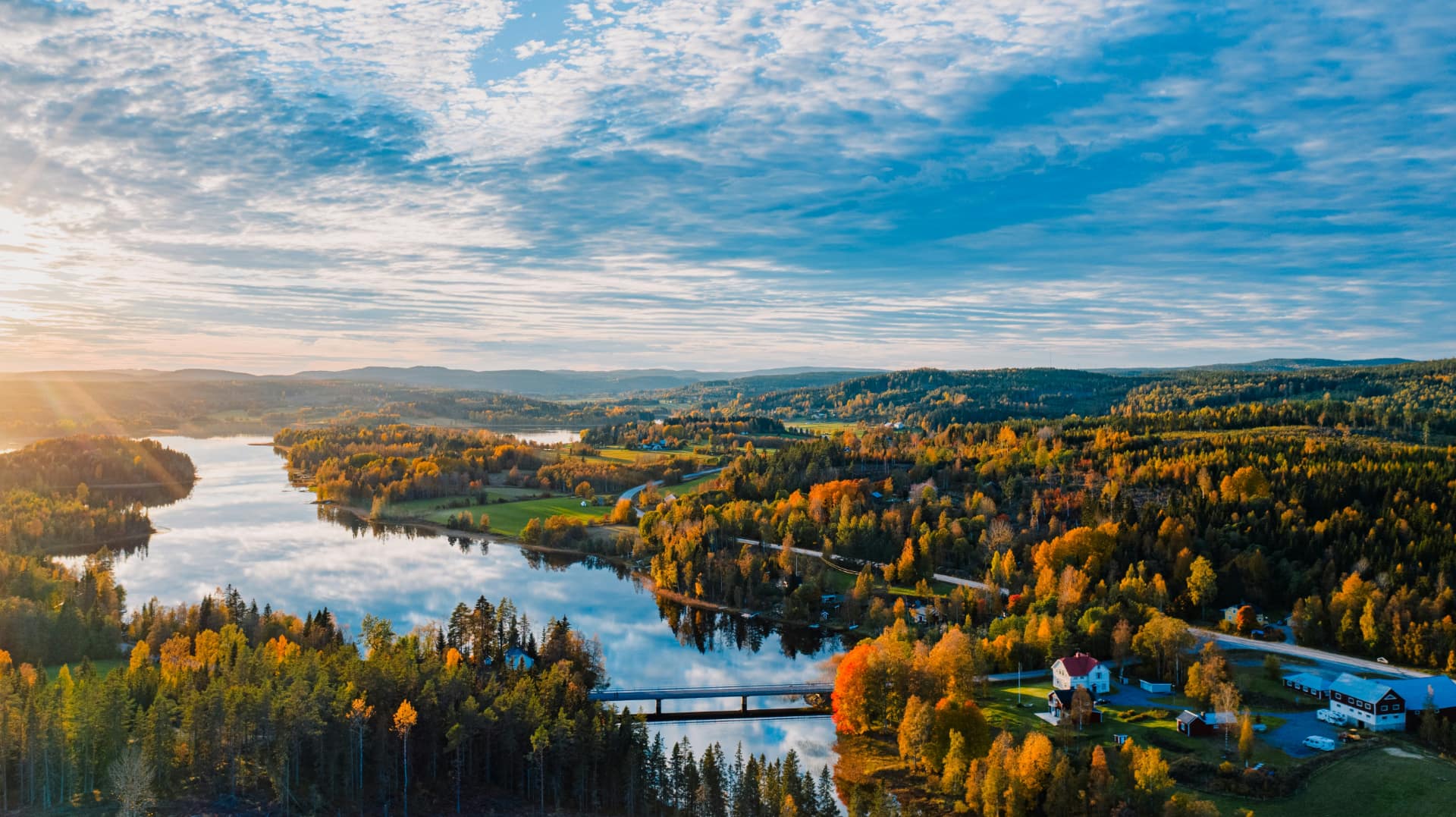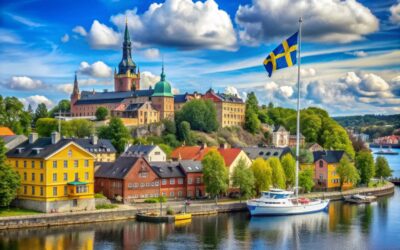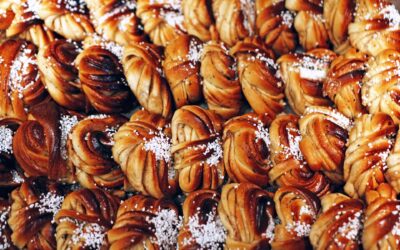Sweden, a country steeped in history and tradition, offers a wealth of cultural experiences for visitors to explore. From world-renowned museums that house centuries-old artifacts to vibrant festivals that celebrate age-old customs, Sweden’s cultural landscape is both diverse and captivating. In this guide, we will delve into some of the best ways to experience Swedish culture, including visits to iconic museums, participation in traditional festivals, and exploration of historic sites. Whether you’re a history buff, a culture enthusiast, or simply curious about Swedish heritage, this guide will provide you with all the information you need to immerse yourself in Sweden’s rich cultural tapestry.

Exploring Swedish Museums
Vasa Museum
The Vasa Museum in Stockholm is one of Sweden’s most visited museums and for a good reason. The museum is dedicated to the Vasa ship, a 17th-century warship that sank on its maiden voyage in 1628 and was salvaged in the 20th century almost entirely intact. The Vasa Museum offers a fascinating glimpse into Sweden’s maritime history and naval engineering.
Highlights
- The Vasa Ship: The centerpiece of the museum is the well-preserved Vasa ship, adorned with hundreds of carved sculptures.
- Exhibits: The museum features several exhibits detailing the ship’s construction, its ill-fated voyage, and the remarkable salvage operation.
- Interactive Displays: Interactive exhibits and films provide deeper insights into life aboard the ship and the historical context of its era.
Visitor Information
The Vasa Museum is located on Djurgården island in Stockholm and is open year-round. For more details on opening hours and ticket prices, visit the Vasa Museum’s official website.
ABBA Museum
For fans of the legendary pop group ABBA, the ABBA Museum in Stockholm is a must-visit. This interactive museum celebrates the music and career of one of Sweden’s most famous exports.
Highlights
- Interactive Exhibits: Visitors can sing, dance, and mix ABBA’s music in interactive exhibits.
- Memorabilia: The museum houses a vast collection of ABBA memorabilia, including costumes, gold records, and personal items.
- Virtual Performances: Experience what it’s like to be the fifth member of ABBA through virtual reality exhibits.
Visitor Information
The ABBA Museum is located on Djurgården island, close to other major attractions. For visiting hours and ticket information, check out the ABBA Museum’s official website.
Skansen
Skansen is the world’s first open-air museum, located on Djurgården island in Stockholm. Founded in 1891, Skansen showcases Sweden’s cultural history through its collection of historical buildings, traditional crafts, and live demonstrations.
Highlights
- Historical Buildings: Skansen features over 150 historical buildings relocated from all over Sweden, representing different periods and regions.
- Zoo: The museum includes a zoo with native Scandinavian animals such as moose, bears, and lynx.
- Cultural Events: Skansen hosts various cultural events and festivals throughout the year, including traditional Swedish Midsummer and Christmas celebrations.
Visitor Information
Skansen is open year-round, with extended hours during the summer months. For more details on opening hours, ticket prices, and events, visit the Skansen official website.

Traditional Festivals and Celebrations
Midsummer
Midsummer, or Midsommar, is one of Sweden’s most cherished and widely celebrated holidays. Taking place around the summer solstice in late June, it marks the longest day of the year and the height of summer.
Overview
Midsummer has its roots in ancient pagan traditions that celebrate fertility and the arrival of summer. It is a time for families and friends to come together and enjoy the beauty of nature.
Traditions
- Maypole Dancing: One of the most iconic Midsummer traditions is the raising and dancing around the maypole (midsommarstång). Participants wear flower crowns and traditional costumes while performing folk dances.
- Traditional Foods: The Midsummer feast typically includes pickled herring, new potatoes, sour cream, and fresh strawberries. Aquavit, a traditional Swedish spirit, is often enjoyed with songs and toasts.
- Flower Crowns: Making and wearing flower crowns (blomkransar) is a beloved Midsummer tradition, symbolizing the beauty of nature and the season.
Where to Celebrate
Midsummer is celebrated throughout Sweden, but some of the most festive and picturesque celebrations can be found in the countryside and smaller towns. Popular places to experience Midsummer include Skansen in Stockholm, Dalarna, and the island of Öland.
Lucia Day
Lucia Day, or St. Lucia’s Day, is celebrated on December 13th and marks the beginning of the Christmas season in Sweden. It is a day filled with light and music, honoring Saint Lucia, a martyr who is said to have brought food and aid to Christians hiding in the catacombs.
Overview
Lucia Day combines elements of both pagan and Christian traditions. It is a celebration of light during the darkest time of the year.
Traditions
- Lucia Procession: The highlight of the celebration is the Lucia procession, where a girl dressed as Saint Lucia leads a group of children in white robes and candlelit wreaths, singing traditional Lucia songs.
- Lucia Buns: Saffron buns (lussekatter) and gingerbread cookies are traditionally baked and enjoyed on this day.
- Candlelit Ceremonies: Schools, churches, and communities hold candlelit ceremonies to celebrate Lucia Day, creating a warm and festive atmosphere.
Where to Celebrate
Lucia Day celebrations can be found throughout Sweden, but notable events include the procession at Skansen, the Stockholm Cathedral, and in towns such as Gothenburg.
Crayfish Party (Kräftskiva)
The Crayfish Party, or Kräftskiva, is a traditional Swedish celebration held in August to mark the end of the summer and the crayfish harvesting season.
Overview
Kräftskiva has been celebrated since the 16th century, though it became widely popular in the 20th century when crayfish became more abundant.
Traditions
- Eating Crayfish: Participants feast on boiled crayfish seasoned with dill, accompanied by bread, cheese, and schnapps.
- Singing Songs: Drinking songs (snapsvisor) are an essential part of the celebration, with guests raising their glasses and singing before taking a shot of schnapps.
- Decorations: Tables are adorned with paper lanterns, bibs, and hats featuring crayfish motifs.
Where to Celebrate
Crayfish parties are often held at homes, summer cottages, and gardens across Sweden. Public events can be found in cities such as Stockholm and Gothenburg.
Walpurgis Night (Valborg)
Walpurgis Night, or Valborg, is celebrated on April 30th to welcome spring. The festivities include singing, bonfires, and community gatherings.
Overview
Valborg traces its roots to both pagan spring festivals and the feast day of Saint Walpurga, an 8th-century abbess.
Traditions
- Bonfires: Large bonfires are lit to symbolize the end of winter and the arrival of spring.
- Singing: Choirs and communities gather to sing traditional spring songs.
- Student Celebrations: University towns like Uppsala and Lund have lively Valborg celebrations, with picnics, concerts, and parties.
Where to Celebrate
Walpurgis Night is celebrated throughout Sweden, with notable events in Uppsala and Lund.

Historic Sites and Landmarks
Drottningholm Palace
Drottningholm Palace, located on the island of Lovön near Stockholm, is a stunning example of Swedish Baroque architecture and a UNESCO World Heritage site. Built in the late 16th century, it serves as the private residence of the Swedish royal family.
Overview
Drottningholm Palace is often compared to the Palace of Versailles in France due to its grandeur and opulent design. The palace complex includes a beautiful park, a Chinese Pavilion, and a court theater.
Highlights
- The Palace: Explore the richly decorated state rooms and halls, which showcase exquisite furnishings and artwork from different eras.
- The Gardens: The palace gardens are divided into three distinct styles: Baroque, English, and Chinese. Visitors can enjoy walking through manicured lawns, ornamental ponds, and sculptures.
- Drottningholm Court Theatre: One of the best-preserved 18th-century theaters in Europe, still used for performances today. Guided tours provide insights into its history and architecture.
Visitor Information
Drottningholm Palace is open to the public year-round, with guided tours available. For more details on visiting hours, ticket prices, and special events, visit the Drottningholm Palace official website.
Gamla Stan
Gamla Stan, Stockholm’s Old Town, is one of the largest and best-preserved medieval city centers in Europe. It is a maze of narrow, winding cobblestone streets, lined with colorful buildings dating back to the 13th century.
Overview
Gamla Stan is the historical heart of Stockholm, offering a wealth of historical sites, shops, restaurants, and museums. It is a vibrant area that brings Sweden’s past to life.
Highlights
- The Royal Palace: One of the largest palaces in Europe, it serves as the official residence of the Swedish monarch. Visitors can explore the royal apartments, museums, and the Treasury.
- Storkyrkan: Stockholm’s oldest church, known for its stunning Gothic architecture and historical significance.
- Nobel Prize Museum: Learn about the history of the Nobel Prize and its laureates through interactive exhibits and displays.
Visitor Information
Gamla Stan is easily accessible from central Stockholm and is a popular destination for walking tours. For more information on attractions and events, visit the Gamla Stan official website.
Uppsala Cathedral
Uppsala Cathedral, located in the historic city of Uppsala, is the largest church in Scandinavia and a significant site in Swedish history. It has been the coronation church for many Swedish kings and queens.
Overview
Dating back to the late 13th century, Uppsala Cathedral is an architectural marvel with its impressive Gothic towers and detailed interior. It also serves as the burial site for notable Swedish figures, including King Gustav Vasa and botanist Carl Linnaeus.
Highlights
- Architecture: The cathedral’s towering spires and intricate Gothic design make it a striking landmark. Inside, visitors can admire beautiful stained glass windows, frescoes, and ornate chapels.
- Historical Importance: Uppsala Cathedral has played a central role in Sweden’s religious and political history. Guided tours offer insights into its past and significance.
- Linnaeus’s Grave: Visit the final resting place of Carl Linnaeus, the father of modern taxonomy.
Visitor Information
Uppsala Cathedral is open to visitors daily, with guided tours available. For more details on visiting hours, ticket prices, and special events, visit the Uppsala Cathedral official website.

Tips for Immersing in Swedish Culture
Learn Basic Swedish Phrases
While many Swedes speak excellent English, learning a few basic Swedish phrases can enhance your experience and show respect for the local culture. Phrases such as “hej” (hello), “tack” (thank you), and “ursäkta” (excuse me) can go a long way in making connections with locals.
Participate in Local Traditions
Engage with Swedish traditions by participating in local festivals and events. Whether it’s dancing around the maypole during Midsummer or joining a crayfish party in August, immersing yourself in these cultural activities will provide a deeper understanding of Swedish heritage.
Visit Local Markets
Explore local markets such as Stockholm’s Östermalms Saluhall or Gothenburg’s Feskekôrka. These markets offer a taste of traditional Swedish foods and provide a lively atmosphere to interact with locals.
Stay in Traditional Accommodations
Consider staying in traditional Swedish accommodations like a countryside cottage (stuga) or a historic hotel. Places like Ängsö Castle offer unique lodging experiences that blend history with comfort.
Take a Guided Tour
Join guided tours to gain insights into Sweden’s rich history and cultural heritage. Many tours are available for historic sites, museums, and even entire cities. For example, Stockholm’s Ghost Walk offers a unique perspective on the city’s history through its darker tales.
For more practical tips on immersing yourself in Swedish culture, visit Visit Sweden’s cultural guide.
Conclusion
Exploring Sweden’s rich heritage and traditions offers a window into the country’s vibrant cultural landscape. From visiting world-class museums and participating in traditional festivals to exploring historic landmarks, Sweden provides countless opportunities for cultural immersion.
Reflecting on the Journey
Sweden’s commitment to preserving its cultural heritage while embracing modernity creates a unique blend of the old and the new. This harmony is evident in its museums, festivals, and historic sites, each telling a story of Sweden’s past and present.
Encouragement for Future Travelers
We encourage you to dive into the rich traditions and heritage of Sweden. Whether you are wandering through the medieval streets of Gamla Stan, enjoying the festivities of Midsummer, or marveling at the grandeur of Drottningholm Palace, each experience will leave you with a deeper appreciation of Sweden’s cultural richness.
For more information and to start planning your cultural adventure, visit Visit Sweden and Sweden’s Official Site.
Happy exploring and enjoy discovering the cultural treasures of Sweden!





0 Comments